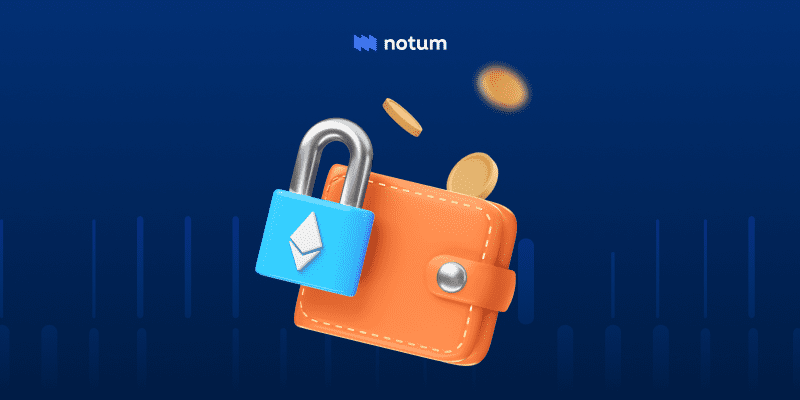Intro
The gaining speed of cryptocurrency popularity has its pros and cons you should be aware of. We want you to have some essential and helpful information on protecting yourself from losing your crypto assets and not being hacked in the best possible way. We believe that these easy-to-follow-steps could help you to prevent a chance of being screwed up with your cryptocurrency account and data breaches.
Essential Steps to Secure Your Wallet
Step 1: Use a Secure Internet Connection
Some bullet points identify a secure connection:
- It should be private and password-protected;
- The network is secured by a firewall;
- You are confident about the other devices which are connected to your connection;
- Your connection is hidden with a VPN (Virtual Private Network); for this, you can use the best VPNs such as CyberGhost, NordVPN, Surfshark, and alike.
Step 2: Mind the Difficulty of Your Password
Once you generate a password for your wallet, make sure you don’t leave it somewhere, you should save it in a special password manager such as KeePass, Roboform, Nordpass, Dashlane, and alike. Please, download those programs only from official websites. Don’t neglect some “musts” while making up your password — it should be long and shouldn’t include any personal info (birthdate, name, family name, etc.); it’s better to have a password with mixed characters such as upper/lower-case letters, numbers, and symbols. Changing your password on a regular basis could be pretty helpful, as well.
Step 3: Protect Your Secret 12-word Recovery Phrase
It is better to keep it on paper and write it down by hand because it is highly recommended not to save your phrase digitally, as it is not that safe. Another important point is that you should keep it far from prying eyes in a really trustable place. Remember, the more secure, the better. It should be encrypted in your mind, and we really mean it.
Step 4: Be Aware of Malicious Websites
To be good at this, it’s very advisable to double-check who is the sender and when the email was sent to you. Another thing that matters is to draw attention to a subject line, so if it looks dodgy, it’s better to recheck and not open the email. Once talking about emails, we want to warn you from clicking links from the emails, as it's a favorite way to redirect you right to a malicious website.

Source: CryptoPotato
As you know, viruses and malware are not the same. A virus is a piece of code that copies itself and damages your computer, destroying your data and corrupting your system. Malware is a range of harmful software, including spyware, worms, rootkits, etc.
Briefly, it means you need to use different software - one problem, one solution approach is the best medicine. And, of course, never forget about.
Step 5: Use a Hardware Wallet
Maybe it’s not that evident, but this type of wallet is your actual offline storage that safeguards your cryptocurrency and makes it almost impossible to lose your funds. Why is it so? Because it is tough to hack such hardware wallets as Trezor, Ledger, and Tangem which are not connected to the Net at all. Think of it as your personal vault in the bank — you have a password and a private key, and you owe the funds entirely.
Step 6: Encrypt Your Hardware Wallet
You have to encrypt the wallet, making up a vigorous as a Cerberus passphrase. Why so? It will be an additional step to defend your funds and take some extra precautions, which is never too much in our particular case. Your coins will be locked and safe, but if it happens that you lost the wallet, it’s nothing to be scared about, as it is just a piece of plastic now nobody can use without your passphrase.
Final Thoughts
The following steps could really help to prevent undesirable cases of losing your cryptocurrency holdings and being hacked. It is always better to use a layered approach when we are talking about the Net and virtual reality. These are the same rules you follow in real life - locking the front door, having a password and a code word at the real banks, crossing the road on a green light, and so forth.
We do believe that if you follow these easy-to-follow rules, your funds and accounts will be totally fine, and your online life will be secure and enjoyable. So, if you notice while reading that you don’t follow any of the steps, it is high time for you to fix that mistake.
